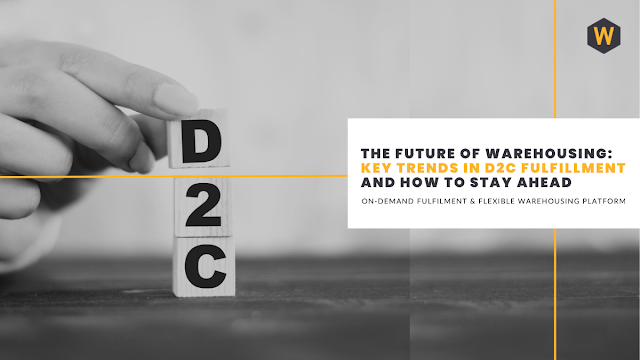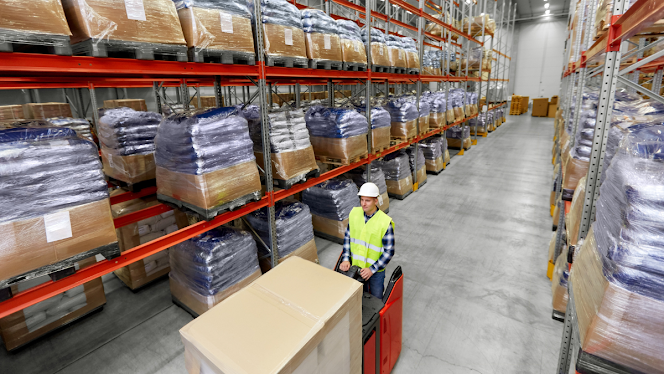5 Ways Your e-Commerce Brand Can Lead the Future of Fulfillment with Sustainability
The world has finally woken up to the impending environmental crisis. Climate change, pollution, and deforestation are some of the biggest challenges that humanity faces today. Businesses have a significant role in mitigating these issues, and e-commerce brands are no exception. The future of fulfilment lies in sustainability, and e-commerce brands must embrace this shift.
Introduction
As consumers become increasingly aware of their purchasing decisions' environmental impact, they seek brands that align with their values. Sustainability has become a critical factor in brand loyalty, and e-commerce brands prioritising sustainability will likely enjoy long-term success. This article explores why the future of fulfilment lies in sustainability and five ways your e-commerce brand can help.
5 Ways Your e-Commerce Brand Can Lead the Future of Fulfillment with Sustainability
The future of fulfilment lies in sustainability because it is fundamental to creating a better future for all. Climate change, pollution, and deforestation are already causing significant environmental damage, and the impact is likely to worsen if we don't act now. E-commerce brands have a crucial role in reducing their carbon footprint and promoting sustainable practices. Here are five ways your e-commerce brand can help:
Use Sustainable Packaging
One of the most significant contributors to e-commerce's environmental impact is packaging. E-commerce brands can reduce their carbon footprint using sustainable packaging materials like recycled cardboard, biodegradable plastics, and paper-based alternatives. These materials can be recycled or decomposed, reducing waste and pollution.
Optimise Transportation
Transportation is another significant contributor to e-commerce's environmental impact. Brands can reduce their carbon footprint by optimising transportation and using more efficient routes. This can be achieved by partnering with logistics companies prioritising sustainability or investing in electric or hybrid vehicles.
Promote Energy Efficiency
E-commerce brands can reduce their carbon footprint by promoting energy efficiency. This can be achieved using energy-efficient lighting, equipment, and appliances in their warehouses and offices. Brands can also switch to renewable energy sources like wind or solar power to power their operations.
Reduce Waste
Waste is a significant environmental issue, and e-commerce brands can reduce their impact by implementing waste-reduction strategies. This can be achieved by optimising inventory management, reducing overproduction, and minimising packaging waste.
Partner with Sustainable Suppliers
E-commerce brands can also promote sustainability by partnering with suppliers and prioritising sustainable practices. This includes sourcing raw materials from sustainable sources, minimising waste, and reducing carbon footprint. By working with sustainable suppliers, e-commerce brands can reduce their environmental impact and promote sustainability across their supply chain.
FAQs
Q1. Why is sustainability essential for e-commerce brands?
A1. Sustainability is essential for e-commerce brands because it is critical to brand loyalty. Consumers are increasingly aware of the environmental impact of their purchasing decisions and seek brands that align with their values. E-commerce brands prioritising sustainability will likely enjoy long-term success and customer loyalty.
Q2. How can e-commerce brands reduce their carbon footprint?
A2. E-commerce brands can reduce their carbon footprint by implementing sustainable practices like using sustainable packaging, optimising transportation, promoting energy efficiency, reducing waste, and partnering with sustainable suppliers.
Q3. What is sustainable packaging?
A3. Sustainable packaging refers to packaging materials that are environmentally friendly and can be recycled or decomposed. Sustainable packaging materials include recycled cardboard, biodegradable plastics, and paper-based alternatives.
Q4. How can e-commerce brands optimise transportation?
Transportation by partnering with logistics companies prioritising sustainability, investing in electric or hybrid vehicles, and optimising routes to reduce fuel consumption and emissions.
Q5. How can e-commerce brands promote energy efficiency?
A5. E-commerce brands can promote energy efficiency by using energy-efficient lighting, equipment, and appliances in their warehouses and offices. They can also switch to renewable energy sources like wind or solar power to power their operations.
Q6. How can e-commerce brands work with sustainable suppliers?
A6. E-commerce brands can work with sustainable suppliers by sourcing raw materials from sustainable sources, minimising waste, and reducing their carbon footprint. By partnering with sustainable suppliers, e-commerce brands can reduce their environmental impact and promote sustainability across their supply chain.
Conclusion
In conclusion, the future of 4pl fulfilment in India lies in sustainability, and e-commerce brands must embrace this shift to ensure long-term success. By implementing sustainable practices like sustainable packaging, optimising transportation, promoting energy efficiency, reducing waste, and partnering with sustainable suppliers, e-commerce brands can reduce their environmental impact and promote sustainability across their supply chain. Consumers are increasingly seeking brands aligning with their values, and e-commerce brands prioritising sustainability will likely enjoy long-term success and customer loyalty.
So, if you're an e-commerce brand looking to positively impact the environment and improve your bottom line, prioritise sustainability. By taking the necessary steps to reduce your carbon footprint and promote sustainable practices, you can help create a better future for all.
Why the future of fulfilment lies in sustainability and 5 ways your e-commerce brand can help. Remember this phrase and embrace sustainability for the success of your e-commerce brand.
Related Links:
Bonded Warehouse in India | Dark Store or Warehouse | Decentralisation of Warehouse




Comments
Post a Comment